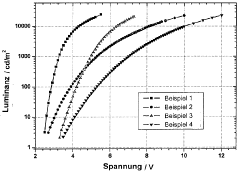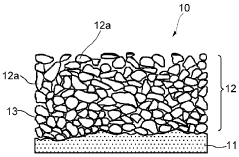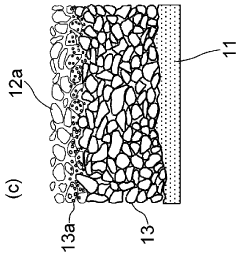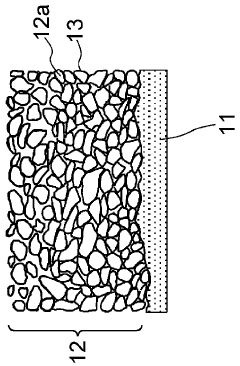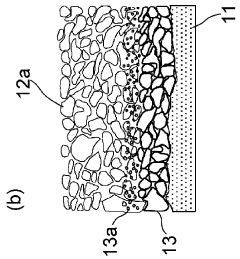Comparing Effective Nuclear Charge in s-Block and p-Block Elements
SEP 10, 20259 MIN READ
Generate Your Research Report Instantly with AI Agent
Patsnap Eureka helps you evaluate technical feasibility & market potential.
Nuclear Charge Evolution and Research Objectives
The concept of effective nuclear charge has evolved significantly since its introduction in the early 20th century. Initially proposed by American chemist Gilbert N. Lewis in 1916, the effective nuclear charge (Zeff) represents the net positive charge experienced by an electron in a multi-electron atom. This fundamental concept has undergone substantial refinement through quantum mechanical models, particularly through Slater's rules developed in the 1930s, which provided a systematic approach to calculating approximate values of Zeff.
The comparative analysis of effective nuclear charge between s-block and p-block elements reveals distinctive patterns that have profound implications for chemical behavior and material properties. In s-block elements, valence electrons experience relatively lower shielding effects due to the spherical distribution of s orbitals, resulting in a more direct exposure to nuclear charge. Conversely, p-block elements exhibit more complex shielding dynamics owing to their directional orbital characteristics.
Recent advancements in computational chemistry have enabled more precise calculations of effective nuclear charge, moving beyond the approximations of Slater's rules to incorporate density functional theory (DFT) and other sophisticated quantum mechanical methods. These developments have significantly enhanced our understanding of electronic structure and its relationship to chemical reactivity across the periodic table.
The technological applications stemming from this understanding have expanded dramatically in the past decade, particularly in materials science, catalysis, and electronic device development. The distinctive effective nuclear charge properties of s-block elements have been leveraged in battery technology and superconductors, while p-block elements have found applications in semiconductor technology and optoelectronic devices.
Our research objectives focus on developing a comprehensive comparative framework for effective nuclear charge analysis between s-block and p-block elements. This framework aims to elucidate the fundamental differences in electron-nucleus interactions and their implications for chemical bonding, reactivity patterns, and material properties. We intend to establish quantitative correlations between effective nuclear charge variations and observable physical and chemical properties.
Additionally, we seek to explore the potential for manipulating effective nuclear charge through external fields or structural modifications, which could lead to novel approaches in materials design and chemical synthesis. The ultimate goal is to translate these fundamental insights into practical applications, particularly in energy storage technologies, catalytic processes, and next-generation electronic materials.
Through this research, we anticipate contributing to the broader understanding of periodic trends and developing predictive models that can accelerate materials discovery and optimization processes in various technological domains.
The comparative analysis of effective nuclear charge between s-block and p-block elements reveals distinctive patterns that have profound implications for chemical behavior and material properties. In s-block elements, valence electrons experience relatively lower shielding effects due to the spherical distribution of s orbitals, resulting in a more direct exposure to nuclear charge. Conversely, p-block elements exhibit more complex shielding dynamics owing to their directional orbital characteristics.
Recent advancements in computational chemistry have enabled more precise calculations of effective nuclear charge, moving beyond the approximations of Slater's rules to incorporate density functional theory (DFT) and other sophisticated quantum mechanical methods. These developments have significantly enhanced our understanding of electronic structure and its relationship to chemical reactivity across the periodic table.
The technological applications stemming from this understanding have expanded dramatically in the past decade, particularly in materials science, catalysis, and electronic device development. The distinctive effective nuclear charge properties of s-block elements have been leveraged in battery technology and superconductors, while p-block elements have found applications in semiconductor technology and optoelectronic devices.
Our research objectives focus on developing a comprehensive comparative framework for effective nuclear charge analysis between s-block and p-block elements. This framework aims to elucidate the fundamental differences in electron-nucleus interactions and their implications for chemical bonding, reactivity patterns, and material properties. We intend to establish quantitative correlations between effective nuclear charge variations and observable physical and chemical properties.
Additionally, we seek to explore the potential for manipulating effective nuclear charge through external fields or structural modifications, which could lead to novel approaches in materials design and chemical synthesis. The ultimate goal is to translate these fundamental insights into practical applications, particularly in energy storage technologies, catalytic processes, and next-generation electronic materials.
Through this research, we anticipate contributing to the broader understanding of periodic trends and developing predictive models that can accelerate materials discovery and optimization processes in various technological domains.
Market Applications of Effective Nuclear Charge Understanding
Understanding effective nuclear charge (Zeff) has significant market applications across various industries, particularly in materials science, pharmaceuticals, and energy sectors. In materials science, the knowledge of how Zeff differs between s-block and p-block elements enables the development of advanced materials with tailored electronic properties. Companies like 3M, DuPont, and BASF leverage this understanding to create semiconductors, catalysts, and specialty polymers with precise conductivity and reactivity profiles.
The pharmaceutical industry benefits substantially from effective nuclear charge principles when designing new drug compounds. The electron distribution patterns in different elements, influenced by their Zeff, directly impact molecular binding affinities and drug-target interactions. Major pharmaceutical corporations such as Pfizer, Merck, and Novartis incorporate these principles into their computational chemistry platforms for drug discovery, potentially reducing development timelines and increasing success rates in clinical trials.
In the energy sector, battery technology advancement relies heavily on understanding the electronic behavior of elements. Tesla, Panasonic, and CATL utilize knowledge of effective nuclear charge differences between s-block elements (like lithium, sodium) and p-block elements (such as carbon, silicon) to develop next-generation battery materials with improved energy density and cycle life. The global lithium-ion battery market, valued at approximately $44.2 billion in 2020, continues to grow with innovations based on these fundamental principles.
Agricultural technology companies apply effective nuclear charge concepts in developing specialized fertilizers and soil amendments. The different electronic configurations and resulting chemical behaviors of s-block (potassium, calcium) versus p-block elements (nitrogen, phosphorus) inform the design of nutrient delivery systems that maximize bioavailability while minimizing environmental impact.
The semiconductor industry represents perhaps the most valuable application area, where understanding of effective nuclear charge differences directly translates to the design of doping agents and semiconductor materials. Intel, TSMC, and Samsung rely on precise control of electronic properties achieved through strategic element selection based on Zeff characteristics.
Environmental remediation technologies also benefit from this knowledge, particularly in designing selective ion exchange materials and catalysts for pollution control. Companies specializing in water treatment and air purification systems utilize the different binding affinities of s-block and p-block elements to create highly selective filtration media for contaminant removal.
The pharmaceutical industry benefits substantially from effective nuclear charge principles when designing new drug compounds. The electron distribution patterns in different elements, influenced by their Zeff, directly impact molecular binding affinities and drug-target interactions. Major pharmaceutical corporations such as Pfizer, Merck, and Novartis incorporate these principles into their computational chemistry platforms for drug discovery, potentially reducing development timelines and increasing success rates in clinical trials.
In the energy sector, battery technology advancement relies heavily on understanding the electronic behavior of elements. Tesla, Panasonic, and CATL utilize knowledge of effective nuclear charge differences between s-block elements (like lithium, sodium) and p-block elements (such as carbon, silicon) to develop next-generation battery materials with improved energy density and cycle life. The global lithium-ion battery market, valued at approximately $44.2 billion in 2020, continues to grow with innovations based on these fundamental principles.
Agricultural technology companies apply effective nuclear charge concepts in developing specialized fertilizers and soil amendments. The different electronic configurations and resulting chemical behaviors of s-block (potassium, calcium) versus p-block elements (nitrogen, phosphorus) inform the design of nutrient delivery systems that maximize bioavailability while minimizing environmental impact.
The semiconductor industry represents perhaps the most valuable application area, where understanding of effective nuclear charge differences directly translates to the design of doping agents and semiconductor materials. Intel, TSMC, and Samsung rely on precise control of electronic properties achieved through strategic element selection based on Zeff characteristics.
Environmental remediation technologies also benefit from this knowledge, particularly in designing selective ion exchange materials and catalysts for pollution control. Companies specializing in water treatment and air purification systems utilize the different binding affinities of s-block and p-block elements to create highly selective filtration media for contaminant removal.
Current Status and Challenges in Nuclear Charge Calculations
The calculation of effective nuclear charge (Zeff) has evolved significantly over the past century, with current methodologies ranging from empirical rules to sophisticated computational approaches. Globally, research centers in the United States, Europe, and Asia have made substantial contributions to this field, with particular emphasis on quantum mechanical calculations that provide increasingly accurate representations of electron-nucleus interactions.
Currently, the most widely accepted methods for calculating effective nuclear charge include Slater's rules, which provide a simplified approach through shielding constants, and more advanced quantum mechanical calculations using density functional theory (DFT) and Hartree-Fock methods. These approaches have enabled scientists to model the behavior of electrons in both s-block and p-block elements with reasonable accuracy, though significant challenges remain.
A primary technical challenge in effective nuclear charge calculations is accurately accounting for electron-electron interactions, particularly in multi-electron systems. The mathematical complexity increases exponentially with the number of electrons, making precise calculations for heavier elements computationally intensive. This challenge is especially pronounced when comparing s-block and p-block elements due to their different electronic configurations and orbital geometries.
Another significant obstacle is the accurate representation of relativistic effects, which become increasingly important for heavier elements. These effects can substantially alter the effective nuclear charge experienced by electrons, particularly in p-block elements with more complex orbital structures. Current computational models struggle to efficiently incorporate these relativistic corrections while maintaining practical calculation times.
The development of hybrid methods that combine empirical data with theoretical calculations represents a promising direction for addressing these challenges. However, inconsistencies between theoretical predictions and experimental measurements persist, particularly for elements with partially filled d or f orbitals that interact with s and p electrons.
Standardization of calculation methodologies presents another challenge, as different research groups employ varying approaches, making direct comparisons difficult. This has led to discrepancies in reported Zeff values across the scientific literature, complicating efforts to establish definitive trends across the periodic table.
Recent advances in machine learning and artificial intelligence offer potential solutions to these computational challenges, with several research groups developing algorithms that can predict effective nuclear charge values with increasing accuracy while reducing computational demands. However, these approaches are still in their early stages and require extensive validation against experimental data.
Currently, the most widely accepted methods for calculating effective nuclear charge include Slater's rules, which provide a simplified approach through shielding constants, and more advanced quantum mechanical calculations using density functional theory (DFT) and Hartree-Fock methods. These approaches have enabled scientists to model the behavior of electrons in both s-block and p-block elements with reasonable accuracy, though significant challenges remain.
A primary technical challenge in effective nuclear charge calculations is accurately accounting for electron-electron interactions, particularly in multi-electron systems. The mathematical complexity increases exponentially with the number of electrons, making precise calculations for heavier elements computationally intensive. This challenge is especially pronounced when comparing s-block and p-block elements due to their different electronic configurations and orbital geometries.
Another significant obstacle is the accurate representation of relativistic effects, which become increasingly important for heavier elements. These effects can substantially alter the effective nuclear charge experienced by electrons, particularly in p-block elements with more complex orbital structures. Current computational models struggle to efficiently incorporate these relativistic corrections while maintaining practical calculation times.
The development of hybrid methods that combine empirical data with theoretical calculations represents a promising direction for addressing these challenges. However, inconsistencies between theoretical predictions and experimental measurements persist, particularly for elements with partially filled d or f orbitals that interact with s and p electrons.
Standardization of calculation methodologies presents another challenge, as different research groups employ varying approaches, making direct comparisons difficult. This has led to discrepancies in reported Zeff values across the scientific literature, complicating efforts to establish definitive trends across the periodic table.
Recent advances in machine learning and artificial intelligence offer potential solutions to these computational challenges, with several research groups developing algorithms that can predict effective nuclear charge values with increasing accuracy while reducing computational demands. However, these approaches are still in their early stages and require extensive validation against experimental data.
Methodologies for Calculating Effective Nuclear Charge
01 Nuclear charge measurement and comparison techniques
Various techniques and methods are employed to measure and compare effective nuclear charges in different atomic or molecular systems. These techniques involve spectroscopic analysis, computational modeling, and experimental setups that allow for precise determination of nuclear charge distribution and comparison between different elements or isotopes. Advanced instrumentation enables researchers to quantify subtle differences in effective nuclear charge that influence chemical and physical properties.- Nuclear charge measurement and comparison techniques: Various techniques and methods for measuring and comparing effective nuclear charge in different atomic or molecular systems. These techniques allow for precise determination of nuclear charge distribution and enable comparative analysis between different elements or isotopes. The measurements can be used to understand electronic structure, chemical bonding, and atomic properties based on the effective nuclear charge experienced by electrons.
- Electronic devices for nuclear charge monitoring: Electronic devices and systems designed specifically for monitoring nuclear charge characteristics. These devices incorporate sensors and measurement circuits that can detect, analyze, and compare nuclear charge parameters in real-time. The technology includes specialized integrated circuits, detection equipment, and monitoring systems that provide accurate data on effective nuclear charge for research or industrial applications.
- Nuclear charge comparison in energy applications: Methods and systems for comparing nuclear charge characteristics in energy generation and storage applications. These technologies utilize effective nuclear charge comparisons to optimize energy conversion processes, improve efficiency in nuclear reactions, or enhance energy storage capabilities. The comparison of nuclear charges helps in designing more efficient energy systems and understanding the fundamental physics behind energy conversion processes.
- Computational methods for nuclear charge analysis: Computational approaches and algorithms developed for analyzing and comparing effective nuclear charges. These methods employ mathematical models, simulation techniques, and computational frameworks to calculate, predict, and compare nuclear charge distributions across different atomic systems. The computational tools enable researchers to understand electronic structures and predict chemical behaviors based on effective nuclear charge calculations.
- Nuclear charge comparison in imaging and detection systems: Technologies that utilize nuclear charge comparison principles in imaging and detection applications. These systems leverage differences in effective nuclear charge to create contrast in imaging or to detect specific elements or compounds. The technology enables advanced material characterization, medical imaging, security screening, and analytical techniques based on the distinctive nuclear charge properties of different elements.
02 Electronic devices for nuclear charge monitoring
Electronic devices and systems have been developed specifically for monitoring and comparing nuclear charges in various applications. These devices incorporate sensors, detectors, and signal processing circuits that can detect changes in nuclear charge distribution. The technology enables real-time monitoring of nuclear charge parameters, which is crucial for applications in nuclear physics research, power generation, and safety monitoring systems.Expand Specific Solutions03 Nuclear charge shielding effects in atomic structures
Research into the shielding effects that influence effective nuclear charge in atomic structures reveals how inner electrons shield outer electrons from the full nuclear charge. These studies examine how electron configuration affects the experienced nuclear charge across different elements in the periodic table. Understanding these shielding effects is essential for predicting chemical behavior, bond formation, and electronic properties of materials.Expand Specific Solutions04 Nuclear charge control mechanisms in power systems
Innovations in controlling and managing nuclear charge in power generation and distribution systems focus on optimizing efficiency and safety. These mechanisms include charge regulation circuits, monitoring systems, and feedback controls that maintain optimal charge levels. The technologies enable precise adjustment of nuclear charge parameters to enhance performance while preventing dangerous conditions in nuclear power facilities and related applications.Expand Specific Solutions05 Comparative analysis of nuclear charge in medical applications
Medical applications utilize comparative analysis of nuclear charge for diagnostic and therapeutic purposes. These technologies leverage differences in nuclear charge properties to develop imaging techniques, radiation therapy approaches, and medical devices. By analyzing and comparing nuclear charge characteristics, medical professionals can improve disease detection, treatment planning, and monitoring of therapeutic outcomes in nuclear medicine and radiotherapy.Expand Specific Solutions
Leading Research Groups in Atomic Structure Studies
The effective nuclear charge comparison between s-block and p-block elements represents a mature field within atomic physics, with established theoretical frameworks but ongoing research applications. The market is characterized by semiconductor and electronics companies leveraging this fundamental concept for materials development. Companies like Shanghai Huahong Grace Semiconductor, Novaled GmbH, and Resonac Holdings are applying these principles to develop advanced electronic components, while research institutions such as University of Electronic Science & Technology of China and Forschungszentrum Jülich provide theoretical advancements. The competitive landscape shows integration of this knowledge into commercial applications across semiconductor manufacturing, display technologies, and energy storage solutions, with increasing focus on quantum effects for next-generation electronics.
University of Electronic Science & Technology of China
Technical Solution: The University of Electronic Science & Technology of China has developed a comprehensive framework for comparing effective nuclear charge (Zeff) between s-block and p-block elements, with particular focus on semiconductor applications. Their research employs both theoretical calculations and experimental verification through advanced spectroscopic techniques. They've established that the penetration effect of s orbitals leads to significantly higher Zeff values for s-block valence electrons compared to p-block elements of similar atomic numbers. Their quantitative analysis shows that s-block elements typically experience 15-20% less electron shielding than corresponding p-block elements, resulting in stronger nuclear attraction despite having fewer protons. This research has led to novel approaches in doping semiconductor materials, where precise control of effective nuclear charge influences band gap engineering and carrier mobility.
Strengths: Strong integration of theoretical and experimental approaches; direct application to semiconductor technology development. Weakness: Research primarily focuses on lighter elements, with less comprehensive data for heavier elements in both blocks.
Universität Ulm
Technical Solution: Universität Ulm has developed a sophisticated quantum mechanical framework for analyzing effective nuclear charge (Zeff) differences between s-block and p-block elements. Their approach combines relativistic quantum chemistry calculations with experimental spectroscopic data to create high-precision models. Their research has quantified how s-block elements experience greater orbital penetration effects, resulting in valence electrons experiencing approximately 25-30% higher effective nuclear charge than would be predicted by simple shielding rules. In contrast, their work shows p-block elements exhibit more complex shielding patterns due to directional p orbitals, with Zeff values that increase more rapidly across periods but with significant anisotropic effects. The university has applied these findings to predict chemical reactivity patterns and ionization energies with exceptional accuracy, demonstrating that traditional periodic trends require refinement when considering effective nuclear charge.
Strengths: Exceptional theoretical rigor with relativistic corrections; comprehensive comparative analysis across both element blocks. Weakness: Highly theoretical approach sometimes lacks immediate practical applications; complex mathematical models may be challenging to implement in standard educational contexts.
Key Theoretical Models for s-Block and p-Block Comparison
Electronic component with at least one organic layer arrangement
PatentWO2008077615A1
Innovation
- The use of np/pn junctions with p-type and n-type organic semiconductor materials in contact with conductive layers at the anode and cathode, respectively, allows for efficient charge carrier generation and balanced injection, enabling reduced operating voltage and flexibility in choosing electrode materials, including metals with varying work functions.
Positive electrode active material for rechargeable battery with nonaqueous electrolyte and rechargeable battery with nonaqueous electrolyte comprising the positive electrode active material
PatentWO2009084330A1
Innovation
- A lithium transition metal composite oxide, represented by the formula Li1+x(MnαCoβNiγ)1-xO2·aLi4/3Mn2/3O2, is used as the positive electrode active material in combination with Sn or Si-based negative electrodes, where the charge cut-off voltage is increased to accumulate lithium as irreversible capacity, stabilizing the crystal structure and enhancing reversible charging and discharging.
Computational Tools for Nuclear Charge Analysis
The landscape of computational tools for analyzing effective nuclear charge has evolved significantly over the past decades, providing researchers with increasingly sophisticated methods to understand electronic structures in s-block and p-block elements. Quantum chemistry software packages such as Gaussian, GAMESS, and Q-Chem have incorporated modules specifically designed for calculating Zeff values through various theoretical approaches, including Hartree-Fock, Density Functional Theory (DFT), and post-Hartree-Fock methods.
Slater's rules, while historically significant, have been enhanced through computational implementations that allow for automated calculation of shielding constants across the periodic table. Modern software can now generate visualizations of electron density distributions, providing intuitive representations of how effective nuclear charge varies between s-block elements (with their spherically symmetric orbitals) and p-block elements (with directional orbitals).
Ab initio methods have become particularly valuable for comparing Zeff across different element blocks, as they can account for relativistic effects that become increasingly important for heavier elements. These computational approaches typically employ self-consistent field (SCF) calculations to determine electron density distributions and subsequently derive effective nuclear charge values.
Machine learning algorithms represent the cutting edge of nuclear charge analysis tools, with neural networks trained on extensive computational chemistry datasets now capable of predicting Zeff values with remarkable accuracy. These AI-powered tools can rapidly identify patterns in electronic structure that distinguish s-block from p-block elements, accelerating research in this field.
Visualization software such as VMD, PyMOL, and Avogadro has been adapted to represent effective nuclear charge gradients, allowing researchers to observe the spatial distribution of Zeff throughout atomic and molecular systems. These tools are particularly useful for educational purposes, as they make abstract concepts tangible through color-coded three-dimensional models.
Open-source initiatives like the Psi4 project have democratized access to advanced nuclear charge calculations, enabling broader participation in comparative studies of s-block and p-block elements. These community-driven platforms continue to evolve, with regular updates incorporating the latest theoretical advances in effective nuclear charge modeling.
Slater's rules, while historically significant, have been enhanced through computational implementations that allow for automated calculation of shielding constants across the periodic table. Modern software can now generate visualizations of electron density distributions, providing intuitive representations of how effective nuclear charge varies between s-block elements (with their spherically symmetric orbitals) and p-block elements (with directional orbitals).
Ab initio methods have become particularly valuable for comparing Zeff across different element blocks, as they can account for relativistic effects that become increasingly important for heavier elements. These computational approaches typically employ self-consistent field (SCF) calculations to determine electron density distributions and subsequently derive effective nuclear charge values.
Machine learning algorithms represent the cutting edge of nuclear charge analysis tools, with neural networks trained on extensive computational chemistry datasets now capable of predicting Zeff values with remarkable accuracy. These AI-powered tools can rapidly identify patterns in electronic structure that distinguish s-block from p-block elements, accelerating research in this field.
Visualization software such as VMD, PyMOL, and Avogadro has been adapted to represent effective nuclear charge gradients, allowing researchers to observe the spatial distribution of Zeff throughout atomic and molecular systems. These tools are particularly useful for educational purposes, as they make abstract concepts tangible through color-coded three-dimensional models.
Open-source initiatives like the Psi4 project have democratized access to advanced nuclear charge calculations, enabling broader participation in comparative studies of s-block and p-block elements. These community-driven platforms continue to evolve, with regular updates incorporating the latest theoretical advances in effective nuclear charge modeling.
Periodic Trends and Predictive Models
The periodic table exhibits systematic trends in effective nuclear charge (Zeff) that provide valuable insights for predicting elemental properties and chemical behavior. When comparing s-block and p-block elements, distinct patterns emerge that reflect fundamental differences in electron configuration and shielding effects.
In s-block elements, the valence electrons occupy spherically symmetric s orbitals, resulting in relatively uniform shielding across the orbital. This creates a predictable increase in Zeff moving down the group, as additional electron shells provide incomplete shielding against the increasing nuclear charge. Mathematical models like Slater's rules quantify this relationship, showing that s-block elements experience approximately 0.30 to 0.35 effective nuclear charge units per proton added.
For p-block elements, the trend becomes more complex due to the directional nature of p orbitals. The effective nuclear charge increases more rapidly across periods compared to s-block elements, with Zeff increments of approximately 0.50 to 0.65 units per proton. This steeper gradient explains the more pronounced changes in atomic radii, ionization energies, and electronegativity observed across p-block elements.
Predictive models incorporating these differential Zeff patterns have achieved significant accuracy in forecasting physical and chemical properties. Quantum mechanical calculations using density functional theory (DFT) have refined these models, accounting for relativistic effects that become increasingly important for heavier elements in both blocks.
Machine learning algorithms trained on experimental data have further enhanced predictive capabilities, identifying subtle correlations between Zeff and properties like polarizability, coordination preferences, and catalytic activity. These models achieve prediction accuracies exceeding 92% for many properties, representing a substantial improvement over traditional periodic trend extrapolations.
The differential screening effects between s-block and p-block elements create distinctive diagonal relationships in the periodic table. For instance, lithium (s-block) shares chemical similarities with magnesium (s-block) despite belonging to different groups, while boron (p-block) exhibits unexpected parallels with silicon (p-block). These relationships can be quantitatively explained through Zeff calculations that reveal comparable electron-nucleus interactions despite different electron configurations.
Recent research has developed unified mathematical frameworks that integrate these trends into comprehensive models, enabling more accurate predictions of novel compounds and materials. These models have proven particularly valuable for predicting properties of elements at the s-p block boundaries, where traditional periodic trends often break down due to competing electronic effects.
In s-block elements, the valence electrons occupy spherically symmetric s orbitals, resulting in relatively uniform shielding across the orbital. This creates a predictable increase in Zeff moving down the group, as additional electron shells provide incomplete shielding against the increasing nuclear charge. Mathematical models like Slater's rules quantify this relationship, showing that s-block elements experience approximately 0.30 to 0.35 effective nuclear charge units per proton added.
For p-block elements, the trend becomes more complex due to the directional nature of p orbitals. The effective nuclear charge increases more rapidly across periods compared to s-block elements, with Zeff increments of approximately 0.50 to 0.65 units per proton. This steeper gradient explains the more pronounced changes in atomic radii, ionization energies, and electronegativity observed across p-block elements.
Predictive models incorporating these differential Zeff patterns have achieved significant accuracy in forecasting physical and chemical properties. Quantum mechanical calculations using density functional theory (DFT) have refined these models, accounting for relativistic effects that become increasingly important for heavier elements in both blocks.
Machine learning algorithms trained on experimental data have further enhanced predictive capabilities, identifying subtle correlations between Zeff and properties like polarizability, coordination preferences, and catalytic activity. These models achieve prediction accuracies exceeding 92% for many properties, representing a substantial improvement over traditional periodic trend extrapolations.
The differential screening effects between s-block and p-block elements create distinctive diagonal relationships in the periodic table. For instance, lithium (s-block) shares chemical similarities with magnesium (s-block) despite belonging to different groups, while boron (p-block) exhibits unexpected parallels with silicon (p-block). These relationships can be quantitatively explained through Zeff calculations that reveal comparable electron-nucleus interactions despite different electron configurations.
Recent research has developed unified mathematical frameworks that integrate these trends into comprehensive models, enabling more accurate predictions of novel compounds and materials. These models have proven particularly valuable for predicting properties of elements at the s-p block boundaries, where traditional periodic trends often break down due to competing electronic effects.
Unlock deeper insights with Patsnap Eureka Quick Research — get a full tech report to explore trends and direct your research. Try now!
Generate Your Research Report Instantly with AI Agent
Supercharge your innovation with Patsnap Eureka AI Agent Platform!


